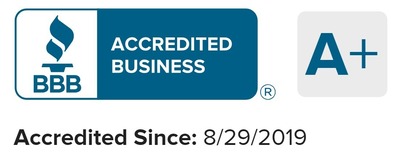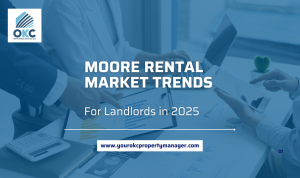Rental inspections are an important duty of being a responsible property owner. Inspections allow you to identify any maintenance issues, safety concerns, or signs of tenant damage before they become major problems. They also provide an opportunity to check that your tenant is complying with the terms of your lease agreement. The goal of rental inspections should be cooperation between both parties within legal guidelines so units remain well-maintained and safe living spaces for all involved during a tenancy period.
According to a 2023 survey by the National Apartment Association, landlords who conduct routine inspections report 30% fewer maintenance emergencies and experience a 25% higher tenant retention rate. These numbers highlight the importance of regular property inspections in maintaining the value of your property and ensuring tenant satisfaction.
But what should you look for during an inspection? In this article, I will explore the critical components that every landlord should prioritize to ensure their property remains in top-notch condition. Read on to learn my tried-and-true process for comprehensive property evaluations.
Why Should You Perform Rental Inspections?
Of course, conducting regular property inspections is crucial to maintaining the condition and value of your rental units. However, it must be conducted with proper notice according to state and local landlord-tenant laws. Staying within legal guidelines, you have the right to inspect what they own for the following reasons:
- Assessing Condition and Repairs Needed: Inspections allow you to closely examine the overall condition of the property to identify any repairs, maintenance issues, or safety concerns that need to be addressed. This includes looking for things like plumbing leaks, electrical problems, damaged walls/floors, pest infestations, etc.
- Ensuring Health and Safety Standards Are Met: You have a duty to ensure their rental meets basic health and safety requirements. Inspections help verify things like smoke detectors and carbon monoxide detectors are working, stairs/railings are structurally sound, windows lock securely, etc.
- Checking for Unauthorized Occupants/Pets: The rental agreement will state how many occupants are allowed to live in the unit and whether pets are permitted. Inspections provide landlords an opportunity to verify that only authorized individuals and animals are present. Learn more about pet screening for rentals
- Confirming the Property Is Being Properly Cared For: One of the important parts of the tenant’s responsibility is adequately maintaining the property. Rental inspections let landlords see that chores like cleaning, trash removal, lawn care, and repairs initiated by tenants are occurring as expected.
- Documenting the Property’s Condition: Thorough documentation of the rental unit’s condition before and after a tenancy protects both the landlord and tenant in case of disputes about things like security deposit deductions or liability for damages.
When Should You Conduct Rental Inspections?
Most experts recommend conducting inspections of rental properties annually at a minimum. However, you may want to inspect more frequently for newly renovated units or those with past issues. Here are some general guidelines on inspection frequency:
- Annual Inspections: Suggested as a baseline for established units in good repair. This allows you to spot small problems before they escalate.
- Every six Months: This is recommended for units that have undergone renovations or experienced tenant turnover. More frequent checks ensure that new repairs are holding up.
- Every 3-4 Months: Consider this schedule for units with a history of tenant-caused damages or maintenance problems. More oversight can prevent further costly disruptions.
- Move-in and Move-out Inspections: Always perform detailed inspections when tenants move in/out. This establishes the existing condition for security deposits and identifies needed fixes between tenancies.
What Things to Remember During a Rental Inspection?
During rental inspections, you should follow the best practices to ensure a smooth process and maintain a positive relationship with tenants. They are as follows:
- Provide Notice: Ensure you give tenants proper notice before conducting inspections, as required by local laws or the terms of the lease agreement. This shows respect for their privacy and gives them time to prepare.
- Document Condition: Take thorough notes and photos of any issues (normal wear and tear) or damages found during the inspection. This documentation can be crucial for addressing maintenance concerns and settling disputes later.
- Provide Feedback: Encourage tenants to provide feedback or raise any concerns they have about the property during the inspection. This can help foster a positive landlord-tenant relationship and improve property management practices.
- Respect Tenant Rights: Remember that tenants have rights regarding the condition and privacy of their rental unit. Avoid any actions that could be construed as landlord harassment or violation of these rights.
- Follow Up Appropriately: After the inspection, communicate any findings or required actions to the tenants promptly. If repairs or maintenance are needed, provide a timeline for completion.
[Also Read: Illegal Property Management Practices to Avoid at All Costs]
Which Areas of the Rental Unit You Can Inspect?
Using a rental checklist helps cover everything during inspections, which keeps your rental running smoothly and demonstrates your commitment to your tenants’ safety and comfort. Here are the major areas landlords can and should examine during inspections:
- Living/Common Areas
- Bedrooms
- Kitchen
- Bathrooms
- Utility Areas
- Exterior
- Storage Areas
1. Living/Common Areas
Let’s start from the living areas. The main living areas, like the living room, family room, and den, fall under the landlord’s purview to inspect. These are common spaces that see general wear and tear. Look for things like:
- Damage to walls, floors, ceilings
- Worn or stained carpets/floors
- Broken or damaged fixtures, appliances
- Cleanliness and orderliness
2. Bedrooms
Bedrooms and their closets are also fair game during inspections. Check for:
- Signs the tenant may be using the room for unapproved activities
- Damage beyond normal wear and tear
- Cleanliness and storage of belongings
3. Kitchen
Inspect the kitchen thoroughly, paying close attention to appliances and cabinets. Look out for:
- Dirty or damaged appliances that need repair/replacement
- Clogged drains, leaks, or other plumbing issues
- Broken or missing cabinet/drawer parts
- General cleanliness and organization
4. Bathrooms
Bathroom fixtures and surfaces should be scrutinized. Watch out for:
- Mold, mildew buildup from poor ventilation
- Damaged sinks, showers, tubs, or toilets
- Leaks or drainage problems
- Cleanliness of surfaces and behind/under fixtures
5. Utility Areas
Areas like the laundry room, garage, basement, and attic can be inspected. Look for:
- Signs of moisture damage or mold growth
- Structural issues or degraded conditions
- Proper function and safety of systems
- Storage of dangerous materials
6. Exterior
While you cannot force entry inside, take note of visible exterior problems like:
- Damaged siding, gutters, or roofing
- Yard/landscape maintenance issues
- Signs of vermin infestation or debris buildup
7. Storage Areas
If tenants have access, storage lockers, closets and sheds on the property can be peered into. Check for:
- Belongings blocking access or fire hazards
- Damage or unsanitary conditions
- Personal items taking up landlord-provided space
What Areas of Rental Units Require Notice?
Yes, you have inspection rights for your property, but the tenants still have an expectation of privacy. So, giving proper notice respects your tenants’ privacy rights. Here are some areas where a written notice of at least 24 hours is required for inspections:
- Bedrooms
- Bathrooms used for dressing/bathing
- Any other areas tenants consider highly private
Common Repairs to Look Out For
Some repairs you may need to address based on what you see during rental inspections include:
1. Plumbing Issues:
- Leaking pipes, fixtures or connections
- Clogged drains or traps
- Faulty toilets that run continuously
2. Electrical Problems:
- Loose or faulty outlets, switches, cover plates
- Blown fuses or tripped breakers
- Exposed or faulty wires
3. Structural Damage:
- Water damage or mold on walls/ceilings
- Sagging floors or doors that don’t close properly
- Rotten wood components like decking or handrails
4. Appliance Maintenance
- Non-working appliances like oven, fridge, AC unit
- Rust or corrosion on appliance exteriors
- Recall or safety issues for older appliances
5. HVAC Service
- Mold or moisture around vents or ductwork
- Dirty air filters that need replacing
- Thermostat not functioning properly
Addressing Issues Found During Inspections
Documenting Findings: Take detailed notes and photos of any issues found during the inspection. This documentation can be valuable for record-keeping and in case of disputes with tenants.
Communicating with Tenants: Inform tenants of any issues discovered during the inspection and discuss the steps needed to address them. If repairs are required, provide a timeline for when they will be completed.
Making Repairs: Prioritize repairs based on their urgency and impact on the property’s habitability. Some common repairs might include:
- Fixing leaks or plumbing issues
- Addressing safety hazards like faulty electrical outlets or broken windows
- Repairing or replacing damaged appliances
Landlord Rental Inspection Takeaways
Regular inspections are crucial for keeping rental properties safe, ensuring tenant compliance, and preventing costly repairs. By knowing what to look for and following the right inspection procedures and documentation practices, you can address issues smoothly and build trust with your tenants. However, if these responsibilities feel overwhelming to you then OKC Home Realty Services can help you effectively manage your OKC rental properties. We allow you to focus on earning long-term tenants who appreciate a well-cared-for home. For more information, contact us today!
What Can a Landlord Look at During an Inspection FAQs
Can a tenant deny me entry for an inspection?
Tenants can't deny reasonable landlord access, but they do have rights to privacy. Inspect only during daylight hours and give at least 24 hours notice in writing. If denied, you may need to file in court to gain lawful entry unless there is an emergency like a water leak. Try resolving politely first.
What areas are landlords not allowed to inspect?
Landlords should respect the tenant's reasonable expectation of privacy and avoid inspecting personal belongings or areas not directly related to the rental unit's condition or lease compliance.
Can a landlord charge the tenant for damages found during an inspection?
Yes, if the inspection reveals damages beyond normal wear and tear, the landlord can charge the tenant for repairs or deduct the cost from the security deposit, as specified in the lease agreement.

Author
Scott Nachatilo is an investor, property manager and owner of OKC Home Realty Services – one of the best property management companies in Oklahoma City. His mission is to help landlords and real estate investors to manage their property in Oklahoma.
 (
(









